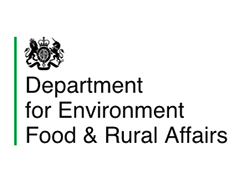Google Tag Manager is a tool that allows you to add and edit tracking tags on your website or mobile app from a user interface. It allows you to easily construct a tag without creating new code each time, which becomes more convenient as you can monitor all the tags on one dashboard, making the marketing process more efficient and precise.
Using Google Tag Manager correctly requires specific knowledge. It is a platform that is easy to mess up if you do not know what you are doing because of its many working parts. Changing a tag without setting it up properly is likely not to cause a huge disruption on your site, but you may lose data which can be detrimental!
Top Tips when implementing Google Tag Manager:
- Plan – Prepare a spreadsheet of all the tags you are planning to implement. This will help you stay more organised and hopefully allow you to identify what is needed from developers.
- Name your tags – Be specific when naming your tags, as the tag numbers multiply, and it can eventually get tricky to navigate. The easier the process is, the less risk, time and money will be wasted on tagging.
- Limit access to the tool – Using the tool without knowledge can break a website. So it is essential to select people who can have access to this tool to avoid any risks.
- Use Custom Templates – Custom templates are easier to use than just editing JavaScript codes.
- Test before publishing – No matter what was changed, it needs to be tested. Google Tag Manager offers a preview and debug mode to help spot any errors.
- Check reports – Investigate real-time reports to prevent issues such as data being sent to the wrong Google Analytics property.
Benefits of using Google Tag Manager
Google Tag Manager comes with many advantages. For many years now, it has helped save time for marketers by eliminating the need for developers to hard code custom events or other tracking required. And as this tool codes the tags automatically, it reduces human error.
Why is it becoming more important than ever to marketers? It’s all thanks to the rollout of Google Analytics 4! Google Analytics is the analytics tool that helps inform marketing decisions, including ad spend and budgets.
Google strongly pushes for GA4 to be set up through Tag Manager. Tag Manager empowers marketers to take complete control over the tags they construct and monitor. Tags help improve the accuracy of analytics, which ensures higher-quality reports and helps improve the understanding of how users interact with your website.
What can be tracked with Google Tag Manager?
- Scroll tracking
- Video views
- Form/ Shopping cart abandonment
- Events – Purchases, add to cart, remove from cart click, link clicks, etc.
- Exit link clicks
Google Tag Manager enables marketers to measure, analyse and create progressive steps by improving the website and mobile app performances. Even though this tool makes it simple to track data, it is not the easiest to set up.
So what does this mean for websites?
Sit tight and buckle up, Google Tag Manager isn’t going anywhere – if you want to make informed decisions on your website and understand what is and isn’t working, you will need Google Tag Manager configured with Google Analytics 4.
Time’s running out! From July 2023, you will no longer be able to access universal analytics data. If you compare year-on-year data, you should have Google Analytics 4 set up and running already. Speak to ExtraDigital today for configuration help!










